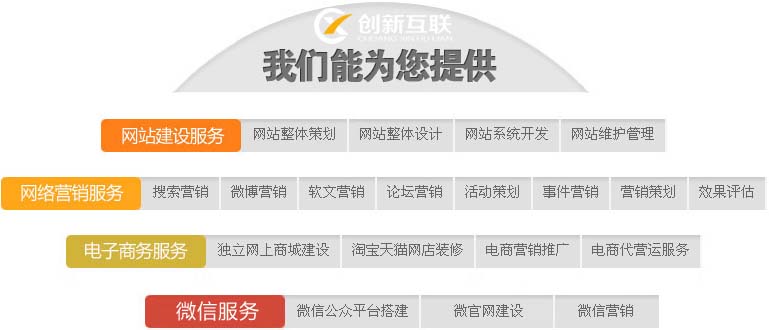PrometheusGoclientlibrary详解
介绍
Prometheus 支持 4 种 指标类型,分别是 Counter、Gauge、Histogram 和 Summary。

成都创新互联成立于2013年,我们提供高端网站建设、重庆网站制作、成都网站设计、网站定制、成都全网营销、小程序开发、微信公众号开发、seo优化排名服务,提供专业营销思路、内容策划、视觉设计、程序开发来完成项目落地,为柔性防护网企业提供源源不断的流量和订单咨询。
- Counter 指标类型,指标值是只能递增,不能递减的数值。需要注意的是,当 Prometheus server 重启时,指标值会被重置为 0。该指标类型可用于统计接口的请求数、错误数等使用场景。
- Gauge 指标类型,指标值是可增可减的数值。该指标类型可用于统计 CPU、内存和硬盘的使用情况,goroutine 的数量等使用场景。
- Histogram 指标类型,指标值基于桶分布。开发者可以自定义桶的区间。该指标类型可用于统计接口的延时请求数等使用场景。
- Summary 指标类型,与 Histogram 类似,区别是 Histogram 直接统计了不同区间中的指标数值,而 Summary 是基于客户端级别,因此不能统计多个实例的聚合数据。该指标类型可用于预先不知道指标桶划分区间的场景。
使用方式
一般在实际应用场景中,通常一个指标需要对应多条时序数据(Label Name 为维度),此时就需要使用支持标签的指标类型。
Prometheus 有 4 种支持标签的指标类型,分别是 ConterVec、GaugeVec、HistogramVec、SummaryVec。
1.CounterVec
CounterVec 与 Counter 的区别是,它支持 Label,我们可以按照 Lable 维度,将同一个指标的数据按照 Lable 分组统计。例如,同一个 Api 接口的请求数,我们可以定义 Lable (Code、Method),按照状态码和 HTTP 请求方式,分组统计同一个 Api 接口的请求数。
示例代码:
var (
// 标签名
labelNames = []string{"host", "code", "path", "method"}
// HttpReqs 实例化 CounterVec
HttpReqs *prometheus.CounterVec = prometheus.NewCounterVec(prometheus.CounterOpts{
Name: "http_requests_total",
Help: "How many HTTP requests processed, partitioned by status code and HTTP method.",
},
labelNames,
)
)阅读上面这段代码,我们使用 NewCounterVec 创建一个实例,它支持多个方法,我们可以使用其中一个性能相对较高的方法 WithLabelValues,返回一个 Counter。
示例代码:
func Metrics() gin.HandlerFunc {
return func(c *gin.Context) {
c.Next()
host := c.RemoteIP()
code := fmt.Sprintf("%d", c.Writer.Status())
method := c.Request.Method
labelsByHttpReqs := []string{host, code, c.FullPath(), method}
prometheus_metrics.HttpReqs.WithLabelValues(labelsByHttpReqs...).Inc()
}
}Counter 支持两个方法,分别是 Inc() 和 Add(),其中 Inc() 将 Counter 增加 1,Add() 将 Counter 增加给定值,需要注意的是,给定值必须为非负值,否则会引发 panic。
需要注意的是,在我们创建指标之后,还需要使用 Register() 接口的 Register() 方法,注册之后才可以被收集到指标数据。如果需要注册多个指标,可以使用 MustRegister() 方法。
示例代码:
reg := prometheus.NewRegistry()
reg.MustRegister(prometheus_metrics.HttpReqs, prometheus_metrics.OpsQueued, prometheus_metrics.Latencies, prometheus_metrics.Temps)2.GaugeVec
GaugeVec 与 Gauge 的区别是,它支持 Label,我们可以按照 Lable 维度,将同一个指标的数据按照 Lable 分组统计。
示例代码:
var (
labelNamesByOpsQueued = []string{
"user",
"type",
}
OpsQueued = prometheus.NewGaugeVec(
prometheus.GaugeOpts{
Name: "ops_queued",
Help: "Number of blob storage operations waiting to be processed, partitioned by user and type.",
},
labelNamesByOpsQueued,
)
)阅读上面这段代码,我们使用 NewGaugeVec 创建实例。
3.HistogramVec
HistogramVec 与 Histogram 的区别是,它支持 Label,我们可以按照 Lable 维度,将同一个指标的数据按照 Lable 分组统计。
示例代码:
var (
labelNamesByLatencies = []string{"method", "code"}
Latencies = prometheus.NewHistogramVec(
prometheus.HistogramOpts{
Name: "http_request_duration_seconds",
Help: "Tracks the latencies for HTTP requests.",
Buckets: []float64{0.99, 0.9, 0.5},
},
labelNamesByLatencies,
)
)4.SummaryVec
SummaryVec 与 Summary 的区别是,它支持 Label,我们可以按照 Lable 维度,将同一个指标的数据按照 Lable 分组统计。
示例代码:
var (
labelNamesByTemps = []string{"species"}
Temps = prometheus.NewSummaryVec(
prometheus.SummaryOpts{
Name: "pond_temperature_celsius",
Help: "The temperature of the frog pond.",
Objectives: map[float64]float64{0.5: 0.05, 0.9: 0.01, 0.99: 0.001},
},
labelNamesByTemps,
)
)阅读上面这段代码,使用 NewSummaryVec 创建实例。
总结
本文我们主要介绍 4 种指标类型的含义,通过 Label 可以将 4 种类型的指标数据,按照 Label 的维度分组统计,我们以支持 Label 的 CounterVec 为例,介绍了它的使用方式,其余 3 种支持 Label 的指标也提供了简单的使用示例。
本文标题:PrometheusGoclientlibrary详解
转载源于:http://www.mswzjz.cn/qtweb/news33/157533.html
攀枝花网站建设、攀枝花网站运维推广公司-贝锐智能,是专注品牌与效果的网络营销公司;服务项目有等
声明:本网站发布的内容(图片、视频和文字)以用户投稿、用户转载内容为主,如果涉及侵权请尽快告知,我们将会在第一时间删除。文章观点不代表本网站立场,如需处理请联系客服。电话:028-86922220;邮箱:631063699@qq.com。内容未经允许不得转载,或转载时需注明来源: 贝锐智能
- 进行ADO.NET对象操作步骤
- 探秘Linux嵌入式项目:揭秘源码奥秘(linux嵌入式项目源码)
- AutoCAD2016如何安装?u盘安装windows2016
- 创新互联Python教程:python将excel数据合并的方法
- 开发Redis框架应用之可视化快速开发(redis框架成品)
- .com过期多久注册?(注册过期了怎么办)
- 香港大带宽服务器租赁贵吗多少钱
- Oracle内存爆棚
- 服务器远程桌面连接设置方法?服务器不能远程桌面
- vs13cuda报错
- 为什么手机会默认通话状态
- Linux安装之如何进行分区(安装linux怎么分区)
- python如何中断程序
- IIS服务器内置备份简单实用小技巧
- 详解Linux内核之脏页跟踪